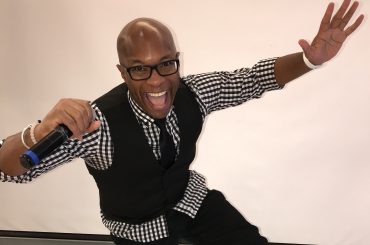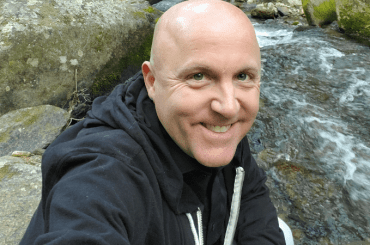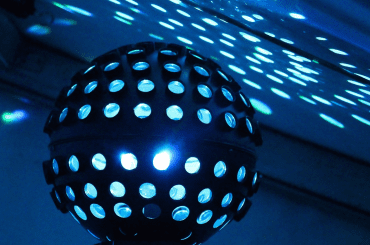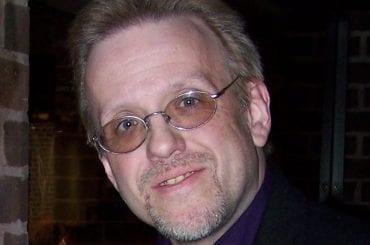Marshall, Minn. — Ask Rob Anderson about his first time and he’ll tell you he was fairly young—14, to be exact.
“I was in the 8th grade and they needed a DJ for the 7th-grade school dance,” he says. “The one they had booked canceled on them, so I told them I would do it.”
Accordingly, he lugged the home-stereo system and CD player along with all his CDs—about 200 at the time, in the days before you could burn your own with all the hit songs on one disc.
“So, each CD had maybe two or three good songs on them,” he says. “It was a lot of CDs to carry. I ran the whole show and played songs for around two hours. I had a blast taking requests and playing songs and being the head of entertainment.”
After telling you about this, his first time, Anderson will then retract that, and say, “I was even younger, actually, when this all started, around 7-years old. I would get a blank cassette tape and record songs off the radio, and pretend I was the radio DJ and record my voice announcing the songs, the weather, and sports.”
Sound familiar?
“I think back on that and I think of all the people that wanted to be something when they were a kid,” he recalls. “Some wanted to be a baseball player, some a police officer, some an astronaut. I always wanted to be a DJ. I always wanted to be in entertainment and in music. I guess you could say that now I am doing what I wanted to do when I was a kid and not many people can really say that.”
True indeed, and Anderson credits his mother for supporting his endeavors. “My mother has always supported me in my life, no matter what it was,” he says. “If she agreed with what I was doing, she encouraged me to follow my dreams and my heart. Now there was one time that a childhood friend of mine and I made one of those cassette tapes and we said some things on there that kids our age shouldn’t have said. Needless to say, she wasn’t too happy about that at all. But she has always encouraged me, because it is what I love doing.”
Anyway, it wasn’t long after Anderson’s 7th-grade debut that he bought his first DJ system and started doing small parties. As he got older, those parties began occurring at local bars, along with karaoke. About 10 years ago, he started to see he could make decent money as a part-time endeavor.
“I always knew there was money to be made at it,” he says, a realization that came in handy six years ago when Anderson lost his regular job, a food-sales gig.
“That’s when I really started pushing it harder, doing it more and growing as a business,” he says. “The money was good and the more I did it the more my reputation grew and the more my phone rang. Right now, I have this set-up that, if I needed to, I could turn this into a full-time job. It has gotten that busy – every week I get two to five phone calls or emails from people asking about my services.”
The biggest challenge was promoting his company name—Push Play Entertainment—and getting established. Social media and a web page helped that along. “They’ve been huge for me,” he says. “Nowadays, I believe that if you want to have a business you need to be online in some way. The first thing that potential brides do when looking for a DJ is they Google it, or ask for suggestions on Facebook. The wedding shows were also a huge help for me. That was a springboard to get me in front of 150 brides right away.”
In his southwest Minnesota market, which is nearly three hours west of the Twin Cities, but only 80 minutes from Sioux Falls, S.D., Anderson says most of his bookings come from people who were at one of his gigs, or through a referral. “My reputation has gotten to be very good and people trust the opinion of their peers,” he says. “Also, Weddingwire.com has helped a lot, too.”
Although primarily a single operator, Anderson does enlist the help of some DJ friends at times, if he needs it. “And the more and more I am growing with lighting, activities, and possibly a photo booth this year, I am considering having someone come along with me to every show to help out.”
His current gear set-up is a diverse one. The PA consists of a Bose loudspeaker system (Panaray 802 III tops with a 502B subwoofer) powered by QSC Audio PLX 2402 and PLX 3402 amplifiers. Playback is executed with PCDJ software and a Mackie 1202-VLZ Pro Micro Mixer.
His lighting includes a mixture of ADJ and Chauvet pieces. ADJ units include Inno Pocket Spot moving heads, Inno Pocket Scan effects and Inno Pocket Roll effects. Chauvet units include EZGobo projectors and various SlimPAR uplights. For video, he uses an Epson projector-and-screen combo.
Anderson says the one lesson the transformed his performances was stagecraft—in other words, do not be afraid to talk in the mic.
“It’s the one thing that separates the good DJs from the bad—the ability to talk on the microphone and keep the crowd engaged. Once you have them, you have them. But once you lose them, it is hard to get them back.”
He also learned to keep everyone involved, from the kids to the grandparents. “Do something to get them involved in the fun, and the sooner you do that, the better. The last thing I want is for someone to say they did not have a good time.”
Anderson sees the business growing, not just in volume but in performance. “I want to be constantly adding more to it,” he says. “I believe in doing more than just playing music. I want to add more in lighting, games, activities. I want people to enjoy the night and I want to be the guy to help them with that. How many people can say they do that?”








